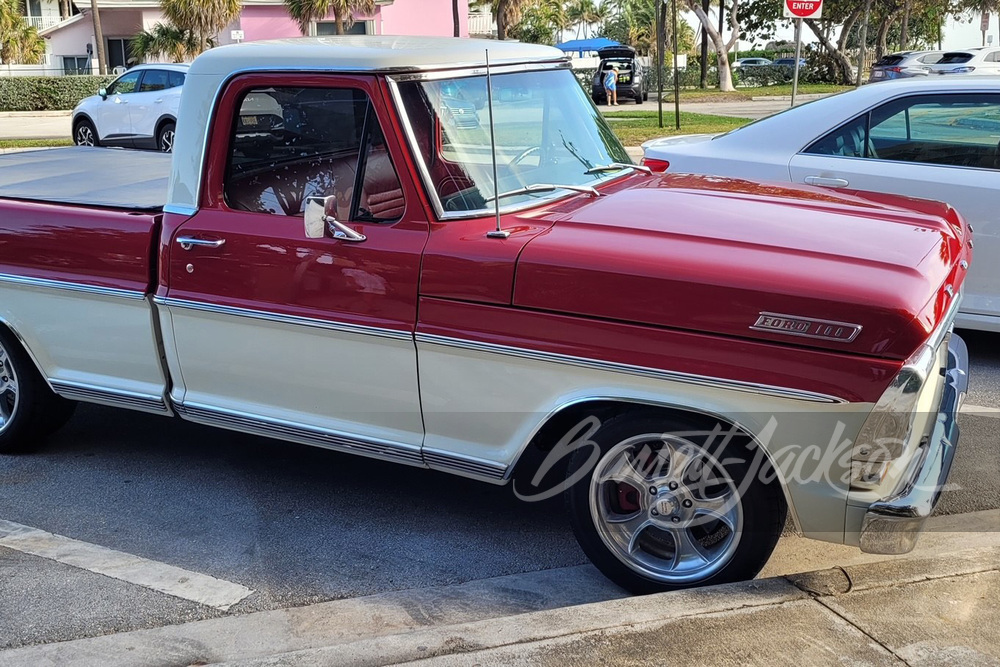Historic Legacy Intersects with Modern Innovation
As one of the most recognized automotive brands in history, Ford has long been synonymous with American ingenuity. Founded in 1903, the company revolutionized the auto industry with its assembly line production techniques, making vehicles accessible to the masses. Today, as global priorities shift towards sustainability and innovation, Ford is once again positioning itself to lead, this time by embracing electric vehicles (EVs). Just recently, the company announced ambitious plans to invest over $50 billion in electrification by 2026, emphasizing its commitment to a greener future.
The Electric Agenda: A Strategic Pivot
Ford’s recent strategy has marked a significant departure from traditional combustion engines. The Ford F-150 Lightning, an electric version of its best-selling F-series truck, has garnered significant attention and praise since its launch. With pre-orders skyrocketing and initial production lines selling out, the Lightning represents more than just a new model; it is a symbol of Ford’s pivot toward a more sustainable business strategy. As Doug Field, Ford’s chief advanced product development and technology officer, succinctly stated, “The F-150 Lightning is our answer to growing consumer demand for electric options without sacrificing the performance and capabilities that are synonymous with the Ford brand.”
Market Trends and Consumer Sentiment
With the global automotive market shifting towards EVs, consumer sentiment reflects an increasing appreciation for sustainability without compromising on performance. Recent surveys indicate that nearly 70% of Canadian drivers are considering purchasing an electric vehicle within the next five years—a notable change that underscores the urgency for manufacturers to adapt. For Ford, this shift isn’t just about meeting demand; it’s about redefining the company’s identity in a rapidly evolving automotive landscape.
Challenges Ahead: Competition and Infrastructure
The road ahead, however, is filled with challenges. Ford faces stiff competition, not only from traditional manufacturing giants like General Motors and Toyota but also from electric-only companies such as Tesla and Rivian. Moreover, while Ford is rapidly rolling out new electric models, the infrastructure to support widespread EV adoption remains a significant barrier. Charging stations, battery technologies, and supply chain logistics for raw materials such as lithium and cobalt are critical factors that Ford will need to navigate carefully as it scales its EV initiatives.
A Future Oriented Towards Sustainability
The stakes are high, and Ford’s success or failure could serve as a bellwether for the wider automotive industry. As the Canadian public becomes increasingly aware of climate issues, Ford’s electrification efforts may resonate profoundly, particularly among younger consumers who prioritize sustainable practices. “We realize that we are on a finite planet, constantly challenged by climate change,” stated Sarah McSweeney, an environmental policy expert and automotive analyst. “How brands like Ford respond will shape not just their futures but the overall direction of mobility in the 21st century.”
Looking Ahead: Forecasting the Future of Ford
Ford’s strategic shift towards electric vehicles is a gamble that could pay off in dividends. As the company embraces innovation and sustainability, public sentiment appears to be evolving in favor of these initiatives. Moving forward, the success of Ford will hinge on its ability to compete, innovate, and educate consumers about the benefits of electric vehicles. If they can engage younger consumers and address the challenges related to infrastructure, Ford may very well lead the change in not just how we drive but also how we think about our responsibilities toward the planet.

